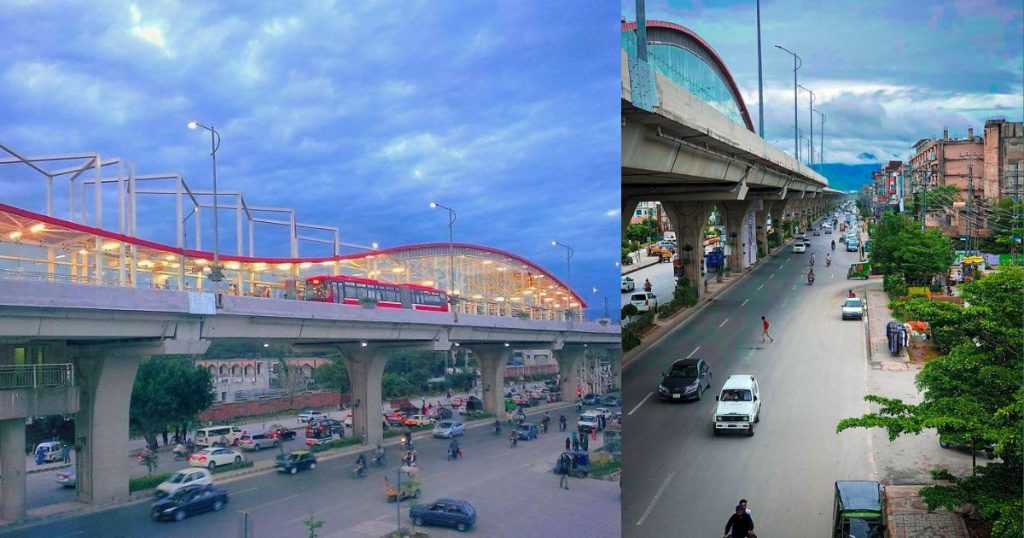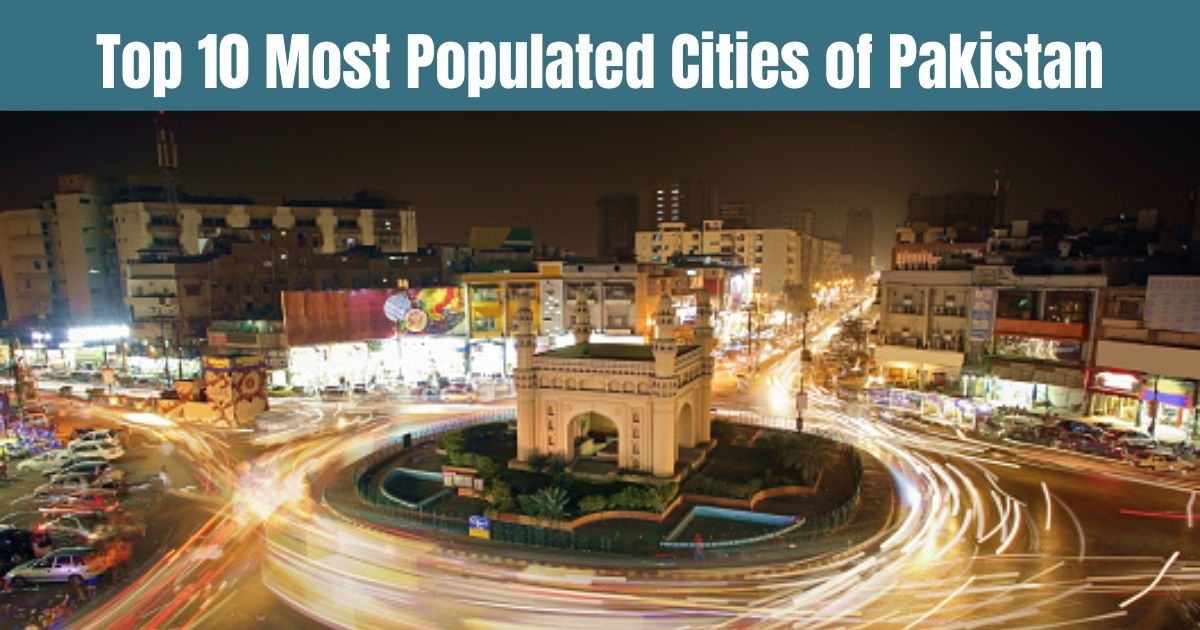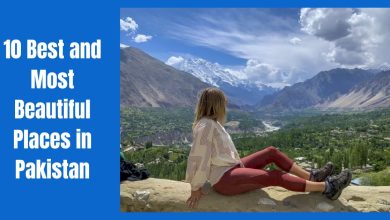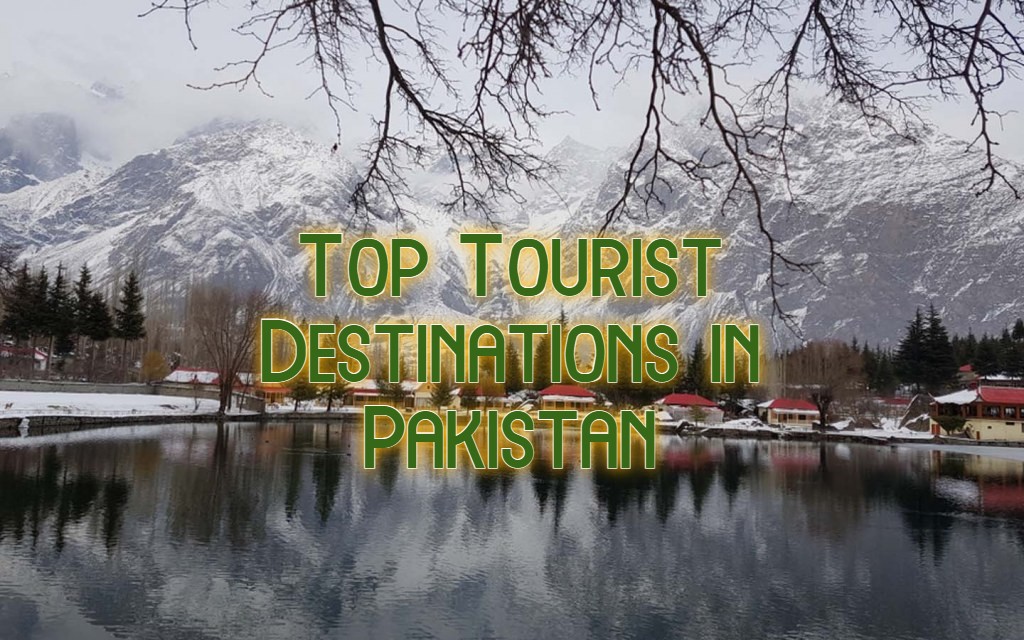Top 10 Most Populated Cities of Pakistan
Pakistan is one of the most populous countries in the world, with a population of Two hundred thirty-two million seven hundred seventeen thousand two hundred thirteen people in 2023. It is a country with diverse cultures, languages, and traditions. This article will explore the top 10 most populated cities in Pakistan. These cities are the hub of economic activities and are rich in history and culture.
Karachi
Karachi is the largest city in Pakistan, located on the coast of the Arabian Sea. It was the first capital of Pakistan and has played an essential role in the country’s development. Its strategic location has made it an important trade hub since ancient times. It has also been a gateway to the Indian subcontinent and played a significant role in the British Empire’s trade and transportation system.
Population Growth
Karachi’s population is Seventeen million two hundred thirty-six thousand in 2023. It is one of most Top 10 Most populated cities of Pakistan stems from its unique geographical location and economic opportunities. Karachi is a vibrant metropolis offering many job opportunities, education, and healthcare facilities. It attracts people from Pakistan and neighboring countries, such as India, Bangladesh, and Afghanistan.
Economic Opportunities
Karachi is the economic engine of Pakistan and generates around 20% of the country’s GDP. It has a diverse economy that offers numerous job opportunities. The city is home to the country’s largest stock exchange, the Karachi Stock Exchange (KSE), and many multinational companies have offices here. Karachi’s port is also a significant hub for international trade. It is one of populated cities of Pakistan with crucial destination for business travelers.
Infrastructure
Karachi has excellent infrastructure, including an extensive road network, modern airports, and a robust public transportation system. The city also has several modern shopping malls, parks, and recreational facilities. The Karachi Port Trust has significantly invested in developing the city’s infrastructure, contributing to its rapid development.
Education
Karachi has a well-developed education system, with numerous public and private schools, colleges, and universities. It is home to some of Pakistan’s most prestigious educational institutions, such as the University of Karachi and the Institute of Business Administration. The city also has many professional training centers that offer courses and certifications. Get to know about TOP 10 Shows on Netflix in Pakistan.
Culture and Diversity
Karachi is a melting pot of cultures, and its people come from diverse ethnic and linguistic backgrounds. The city has a rich history and cultural heritage, and its architecture reflects its colonial past. The city is also known for its vibrant music and art scenes and hosts numerous cultural festivals throughout the year.
Lahore
Lahore will have a population of Thirteen million nine hundred seventy-nine thousand three hundred ninety people in 2023. It is 2nd populated cities of Pakistan that locates in Punjab province. The city is divided into nine administrative towns and has a diverse population, including Punjabis, Pashtuns, Sindhis, and Balochis. The official language of Lahore is Urdu, but Punjabi and English are also widely spoken.
Culture and Heritage
Lahore is known for its rich cultural and artistic heritage. The city has several historical landmarks, including the Lahore Fort, the Badshahi Mosque, and the Shalimar Gardens. The Lahore Fort, also known as Shahi Qila, is a UNESCO World.
Heritage Site that was built during the Mughal era. The fort is famous for its intricate architecture, which includes stunning frescoes and elaborate tilework. The Badshahi Mosque is one of the largest mosques in the world and was also built during the Mughal era. The mosque has a capacity of over 100,000 worshippers and is known for its beautiful marble work and intricate calligraphy.
Education
Lahore is known for its top-notch educational institutions. The city is home to some of the most prestigious universities and colleges in Pakistan, including the University of Punjab, Lahore University of Management Sciences (LUMS), and the Government College University (GCU). These universities have produced some of the brightest minds in Pakistan, including Nobel Laureate Abdus Salam.
Food
Lahore is famous for its food and has a unique cuisine that people all over the world love. The city is known for its spicy and flavorful dishes, including Lahori Chana Chaat, Paya, and Haleem. The city also has several famous food streets, including Gawalmandi and Anarkali Bazaar, where visitors can sample some of the best food in Lahore.
Economy
Lahore is also an important economic hub in Pakistan. The city has several industries, including textiles, software development, and automotive manufacturing. The Lahore Stock Exchange is also located in the city, making it an important center of finance in the country.
Transportation
Lahore’s well-developed transportation system includes buses, taxis, and rickshaws. The Lahore Metrobus, a rapid transit system, was introduced in 2013 and has helped ease traffic congestion in the city. Lahore is also home to the Allama Iqbal International Airport, which connects the city to the rest of Pakistan and other international destinations.
Faisalabad
Faisalabad is one of the most populated cities in Pakistan, located in the province of Punjab. The city has a rich history and culture and has been a significant center of trade and commerce for centuries. Faisalabad is known for its textile industry, which has played a vital role in its economic growth. It has Three million seven hundred eleven thousand population in 2023.
Location and Accessibility
One of the primary reasons for Faisalabad’s high population is its strategic location. The city is in the heart of Punjab, Pakistan’s most populous province, and it is well-connected to other major cities of the country through a network of highways, railways, and air transportation. Faisalabad is only a few hours’ drive away from Lahore, the cultural capital of Pakistan, and Islamabad, the country’s capital.
Economic Opportunities
Faisalabad’s textile industry has been a significant driver of the city’s economic growth. The city is home to some of the largest textile mills in Pakistan, which export their products to countries all over the world. This industry has created job opportunities for millions of people, not only in Faisalabad but also in other parts of the country.
Educational Institutions
Faisalabad is also known for its excellent educational institutions, including some of the best universities and colleges in the country. These institutions attract students from all over the country who come to Faisalabad to pursue their education and build their careers.
Cultural Diversity
Faisalabad is a melting pot of different cultures and traditions, with people from all over the country living and working in the city. This diversity has enriched the city’s culture, cuisine, and art, making it a great place to experience Pakistan’s rich heritage. Faisalabad is also known for its festivals and events, which celebrate the city’s cultural diversity and bring people from different communities together.
Infrastructure Development
In recent years, Faisalabad has seen significant development in its infrastructure, including the construction of new roads, bridges, and buildings. This development has improved the city’s connectivity, making it easier for people to travel and commute within the city. The development has also attracted new businesses and investors who are looking to take advantage of the city’s growing infrastructure and economic opportunities.

Rawalpindi
When it comes to the most populated cities in Pakistan, Rawalpindi is one of them. Located in the province of Punjab, Rawalpindi has a population of over Two million three hundred seventy-seven thousand three hundred twenty-five people in 2023. This city is the fourth largest in Pakistan, following Karachi, Lahore, and Faisalabad.
Geography and Climate of Rawalpindi
Rawalpindi is located at the northernmost tip of the Punjab province, bordering Islamabad, the federal capital of Pakistan. It is situated in the Pothohar Plateau at an elevation of 508 meters above sea level. The city has a diverse topography, with hills, valleys, and plains spread across its terrain. The river Soan flows through the outskirts of the city, adding to its natural beauty.
The climate of Rawalpindi is classified as subtropical, with hot summers and cool winters. The city experiences monsoon rains from July to September, which can sometimes cause flash floods in low-lying areas. The best time to visit Rawalpindi is during the winter season, from November to February when the weather is mild and pleasant.
History of Rawalpindi
Rawalpindi has a rich history that dates to ancient times. The city has been inhabited since the Indus Valley Civilization, which flourished in the region from 3300 BCE to 1300 BCE. Rawalpindi is also mentioned in the records of Alexander the Great’s campaigns in the subcontinent.
In the Mughal era, Rawalpindi was an important trading center and was known for its bazaars and caravanserais. The city was captured by the Sikhs in the early 19th century and was later annexed by the British in 1849.
Culture and Tourism in Rawalpindi
Rawalpindi is a diverse and multicultural city with a rich heritage and a vibrant social scene. The city is known for its delicious food, bustling markets, and colorful festivals. Some of the famous dishes of Rawalpindi include Peshawari chappal kabab, murgh cholay, and nihari.
There are many historical landmarks and tourist attractions in Rawalpindi, including the Rawalpindi Museum, the Rawalpindi Cricket Stadium, and the Ayub National Park. The city is also a gateway to the scenic northern areas of Pakistan, such as Murree, Nathia Gali, and Abbottabad.
Economy of Rawalpindi
Rawalpindi has a diverse and robust economy with a mix of agricultural, industrial, and service sectors. The city is home to many small and medium-sized enterprises, as well as multinational companies and banks. The main industries in Rawalpindi include textiles, leather goods, and food processing.
Rawalpindi is also an important transportation hub, with a major railway station and a modern airport. The city is connected to the national motorway network and is also an important stopover for the famous Karakoram Highway, which connects Pakistan to China.
Multan
Multan is the most populated cities of Pakistan, with a population of over Two million one hundred fifty-five thousand people in 2023. The city has a rich and diverse population, with a mix of ethnicities and religions. Most of the population in Multan is Muslim, with a significant minority of Hindus and Christians. The city has a high population density, with many people living in crowded areas and a rapid urbanization rate.
History of Multan
Multan has a rich and diverse history, with evidence of human settlement in the area dating back to ancient times. The city has been ruled by a range of empires and dynasties, including the Greeks, the Mauryans, the Kushans, the Mughals, and the British. Each period of rule has left its mark on the city, with a range of historic buildings, monuments, and artifacts still visible today.
Culture of Multan
The culture of Multan is diverse and vibrant, with a range of traditions, customs, and celebrations. The city is famous for its handicrafts, including pottery, textiles, and embroidery. The people of Multan are known for their hospitality and warmth, and visitors to the city can expect to be welcomed with open arms. The city has a range of festivals and celebrations throughout the year, including the Urs festival, which celebrates the life of Sufi saint Shah Rukn-e-Alam.
Key Attractions in Multan
Multan has a range of attractions for visitors to explore, including historical landmarks, museums, and natural beauty spots. Some of the key attractions in the city include:
1. The Mausoleum of Shah Rukn-e-Alam: This impressive mausoleum is the final resting place of Sufi saint Shah Rukn-e-Alam and is one of the most important religious sites in Multan.
2. Multan Fort: This impressive fort is one of the oldest in Pakistan and was built in the 12th century.
3. Tomb of Bahauddin Zakariya: This beautiful tomb is dedicated to the famous Sufi saint Bahauddin Zakariya and is a popular destination for pilgrims.
4. Multan Museum: This museum houses a range of historical artifacts, including pottery, coins, and manuscripts.
5. Ghanta Ghar: This historic clock tower is a landmark of the city and provides panoramic views of Multan.
Hyderabad
Hyderabad is one of the most populated cities in Pakistan, with a population of over One million nine hundred sixty-eight thousand people in 2023. The city has experienced rapid population growth in recent years due to urbanization, migration, and industrialization. Most of the population in Hyderabad is Muslim, with a significant Hindu minority.
Hyderabad is one of the oldest cities in Pakistan and is in the southern province of Sindh. The city is known for its rich history, beautiful architecture, and vibrant culture. Hyderabad was founded in the late 18th century by Mian Ghulam Shah Kalhoro, who named it after his wife, Princess Hyderi Begum.
Hyderabad’s History
Hyderabad has a long and fascinating history that dates to the prehistoric era. The city was ruled by several dynasties, including the Kalhora, Talpur, and British regimes. Hyderabad played a crucial role in the Indian independence movement, and several prominent freedom fighters were born in the city.
Culture and Festivals
Hyderabad is known for its vibrant culture and rich traditions. The city has a diverse population that includes Sindhis, Muhajirs, and Punjabis. The people of Hyderabad are warm, hospitable, and friendly, and they love to celebrate their festivals with great enthusiasm and zeal.
Attractions in Hyderabad
Hyderabad has many beautiful attractions that attract visitors from all over Pakistan and abroad. Some of the most popular tourist spots in Hyderabad include:
1. Sindh Museum: This museum showcases the history and culture of Sindh province and has a vast collection of artifacts and exhibits.
2. Tombs of Talpur Mirs: These tombs belong to the Talpur rulers of Sindh and are known for their beautiful architecture and intricate designs.
3. Rani Bagh: This is a beautiful park that is perfect for a picnic or a relaxing stroll. It has lush green lawns, colorful flowers, and a serene atmosphere.
4. Pacco Qillo: This is a fort build in the Talpur rulers and is one of the oldest buildings in Hyderabad. It is a great place to explore and learn about the city’s rich history.
Gujranwala
Located in the heart of Punjab, Gujranwala is one of the most populated cities in Pakistan. It will have a population of over Two million four hundred fifteen thousand people in 2023. The city is located on the banks of the Chenab River, which adds to its scenic beauty.
Gujranwala is an ancient city that has a rich history and culture. It was founded by Sultan Muhammad Tughlaq in the 14th century and has since played an important role in the region. The city is known for its diverse economic activities, including agriculture, manufacturing, and trade. It is also home to many renowned educational institutions and health facilities.
Economy
Gujranwala is a hub of economic activity, with various industries contributing to the city’s GDP. The city is famous for its manufacturing industry, which includes sports goods, electrical appliances, and ceramics. Many national and international companies have set up their factories in the city, providing employment opportunities to the locals.
Agriculture is also a significant contributor to the city’s economy. Gujranwala is known for its fertile soil and is a major producer of crops like wheat, rice, and sugarcane. The city has a well-established irrigation system, which ensures that the farmers get a consistent supply of water for their crops.
Education
Gujranwala is home to many prestigious educational institutions, including the University of Gujranwala, Government College University, and the National Textile University. These institutions provide quality education to students and have produced many notable alumni who have made significant contributions to their respective fields.
The literacy rate in Gujranwala is higher than the national average, which is a testament to the importance the city places on education. The government has also taken steps to improve the quality of education by investing in infrastructure and teacher training programs.
Healthcare
Gujranwala has a well-developed healthcare system, with many hospitals and clinics providing medical services to the locals. Some of the most renowned hospitals in the city include the DHQ Hospital, Civil Hospital, and the Al-Shifa Trust Eye Hospital.
The government has also taken steps to improve the healthcare system by investing in the construction of new hospitals and upgrading the existing ones. The city has also benefited from the establishment of many private hospitals, which provide quality healthcare services to the people.
Tourism
Gujranwala has many tourist attractions that draw visitors from all over the country. The city is famous for its historic landmarks, including the Gujranwala Fort, which was built by the Mughals in the 17th century. Other notable landmarks include the Clock Tower, Jinnah Stadium, and the Gakhar Plaza.



